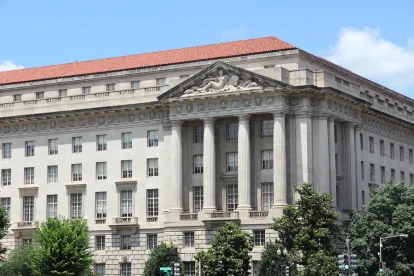Five and a half years after proposing changes to its significant new use rules (SNURs) on per- and polyfluoroalkyl substances (PFAS), EPA has finally released a final rule. On June 22, 2020, EPA issued (in prepublication form) final amendments to two SNURs: one for certain perfluoroalkyl sulfonates, 40 C.F.R. § 721.9582, and one for long-chain perfluroalkyl carboxylate chemical substances (LCPFACs), 40 C.F.R. § 721.10536. Once these amendments go into effect, EPA will have strengthened its requirements for over 500 PFAS under the Toxic Substances Control Act (TSCA). Figuring out how EPA has strengthened those SNURs is something of a challenge, however.
EPA originally proposed changes to the two SNURs on January 21, 2015. Almost five years later, Congress mandated that EPA adopt amended SNURs by June 22, 2020, the fourth anniversary of the 2016 TSCA amendments. We summarized this legislative action and the history of the PFAS SNURs here. EPA published a supplemental proposed rule on March 3, 2020. Release of the final rule came on the Congressional deadline. The final rule takes effect 60 days after its publication in the Federal Register.
The Perfluoroalkyl Sulfonates SNUR
EPA last amended the perfluoroalkyl sulfonates SNUR in 2013, when it added substances, bringing the total number of listed substances to 278. The SNUR designated “manufacture or import for any use” of the listed substances as a significant new use. Since it is illegal to engage in a significant new use without first getting EPA’s authorization, the SNUR effectively prevented any use of those substances as such. The SNUR did not waive the usual exemption for articles, 40 C.F.R. § 721.45(f), however. This meant that the SNUR did not apply to any listed substances when present as a component of an imported article, such as a carpet or automobile. EPA defines “article” in 40 C.F.R. § 720.3(c) to mean:
a manufactured item: (1) Which is formed to a specific shape or design during manufacture; (2) Which has end use function(s) dependent in whole or in part upon its shape or design during end use; and (3) Which has either no change of chemical composition during its end use or only those changes of composition which have no commercial purpose separate from that of the article and that may occur as described in § 720.30(h)(5), except that fluids and particles are not considered articles regardless of shape or design.
The 2015 proposal aimed to waive the article exemption for listed perfluoroalkyl sulfonates in imported carpets, but not in other kinds of imported articles.
The LCPFACs SNUR:
In 2013, EPA adopted a SNUR for LCPFACs that designated manufacturing (including importing) and processing of any covered LCPFAC for use as part of carpets or to treat carpets as a significant new use. The 2013 SNUR made the article exemption inapplicable to any LCPFAC imported as part of carpets. Imports of articles other than carpets that contained covered LCPFACs could continue. The 2015 proposal set out two kinds of LPFACs for additional significant new uses, although the March 2020 supplemental proposal cut back on them somewhat.
The 2020 Final Rule:
The final rule adopts the 2015 proposal for perfluoroalkyl sulfonates by waiving the article exemption with respect to imports of carpets. This means that import of carpets containing a listed perfluoroalkyl sulfonate is prohibited without first obtaining EPA’s authorization. The SNUR does not apply to imports of other kinds of articles containing a perfluoroalkyl sulfonate.
The final rule implements the changes to the LCPFACs SNUR proposed in 2015, as revised in March 2020. There are now three groups of LCPFACs, totaling 219 substances. While EPA provides CAS numbers or Accession numbers for only a few of these LCPFACs in the SNUR itself, the list of substances subject to export notification under section 12(b) provides a CAS number or Accession number for all 219 (see Table F).
Group 1 substances
The final rule adds as a significant new use “any use” of Group 1 substances that are not also Group 2 or Group 3 substances. Aside from the pre-existing waiver of the article exemption for use in imported carpets, Group 1 substances may still be imported as part of an article.
Group 2 substances
Group 2 consists of 20 substances phased out by the end of 2015. The final rule makes “any use” of Group 2 substances a significant new use. The SNUR waives the article exemption for Group 2 substances as part of the surface coating of imported articles. Group 2 substances are also covered by the description of Group 1 substances, so they are similarly subject to the significant new use for imported carpets.
The SNUR will not apply to any Group 2 substance:
Use[d] in an antireflective coating, photoresists, or surfactant for use in photomicrolithography and other processes to produce semiconductors or similar components of electronic or other miniaturized devices.
Group 3 substances
Group 3 consists of perfluorooctanoic acid (PFOA) and its salts. With some exceptions, Group 3 substances have “any use” as a significant new use, except for those in imported articles. A key exception is use in fluoropolymer dispersions and emulsions, and fluoropolymers as part of articles containing a Group 3 substance. Group 3 substances are also covered by the description of Group 1 substances, so they are similarly subject to the significant new use for imported carpets. The final rule waives the article exemption for Group 3 substances, but only with respect to imports of Group 3 substances in carpets or as part of a surface coating of an article. As with Group 2 substances, Group 3 substances are not covered by the SNUR if:
Use[d] in an antireflective coating, photoresists, or surfactant for use in photomicrolithography and other processes to produce semiconductors or similar components of electronic or other miniaturized devices.
Significance of the Final PFAS SNURs
With some exceptions, all of the listed perfluoroalkyl sulfonates and covered LCPFACs have “any use” as a significant new use. That means that no one may manufacture or process those substances as chemicals (except as provided in an exception) without first submitting a significant new use notice (SNUN, essentially the same as premanufacture notice or PMN) to EPA and waiting for EPA to complete its review of the SNUN. EPA believes that most of the listed perfluoroalkyl sulfonates and covered LPFACSs are no longer in commerce, so the final SNURs have the effect of preventing renewed manufacture or processing of those substances as chemicals. (PFOA and its salts remain in commerce.) Notably, however, except to the extent that EPA has not waived the article exemption for those substances, anyone may import articles containing one of these SNUR substances as part of the article.
These final SNURs are likely to have their greatest impact on importers of articles containing substances for which EPA has waived the article exemption. Carpet importers must exercise due diligence to ensure that any carpets they import do not contain those substances. More difficult will be determining whether imported articles contain a Group 2 or a Group 3 substance as a surface coating. According to the preamble, examples of articles that might include a Group 2 or Group 3 substance as a surface coating include outdoor equipment, automotive parts, carpets, furniture, and electronic components.





 />i
/>i

